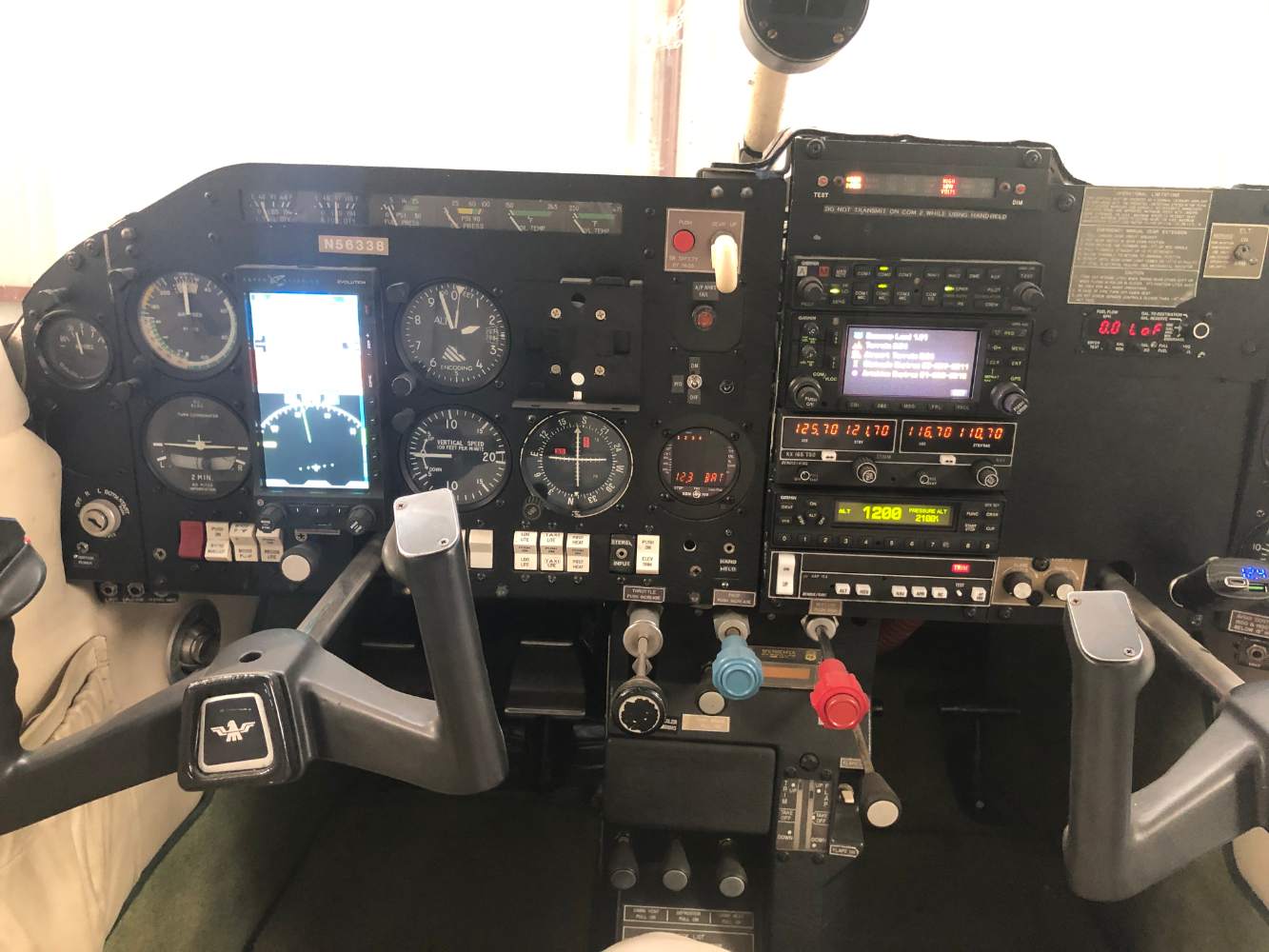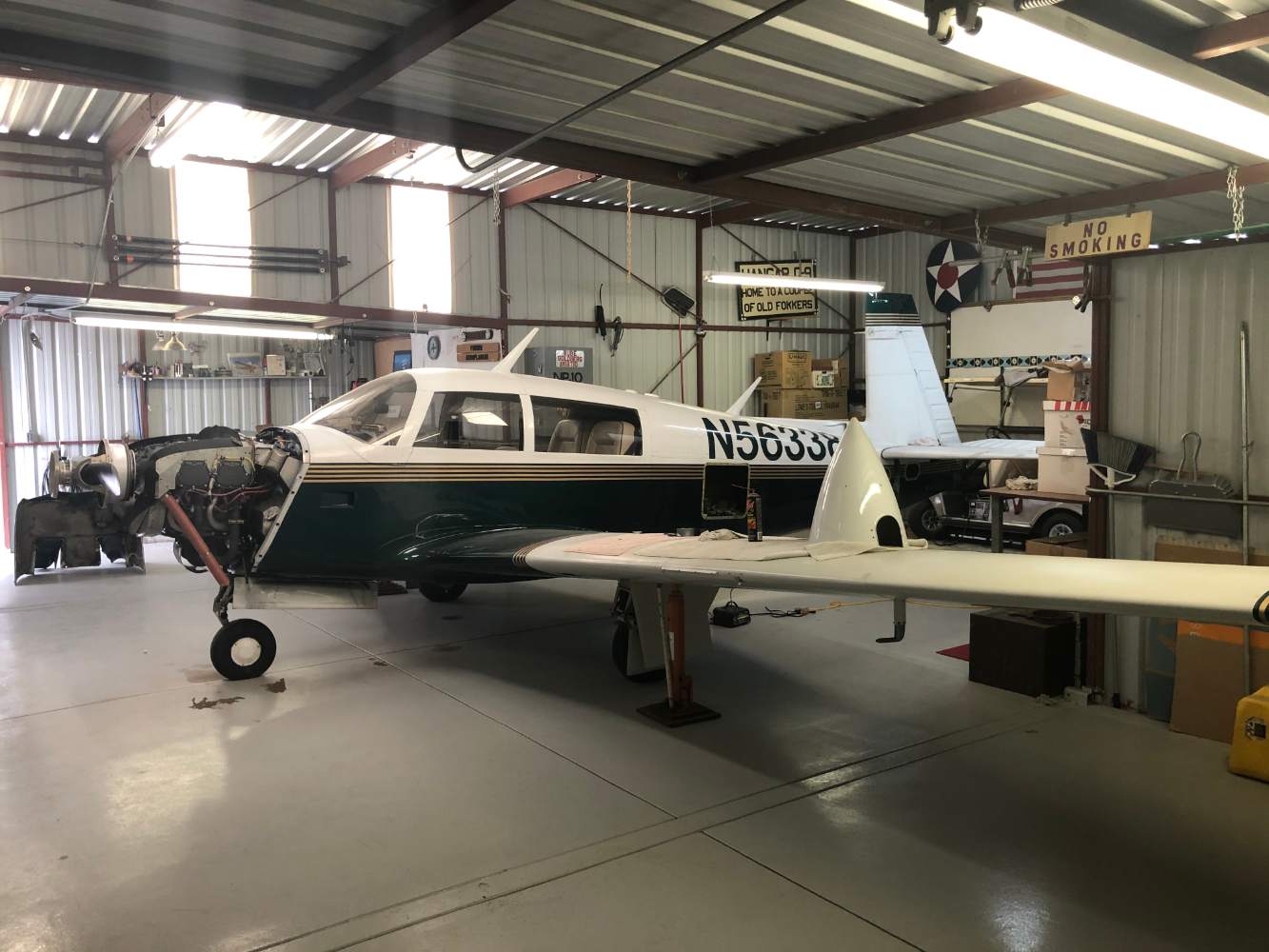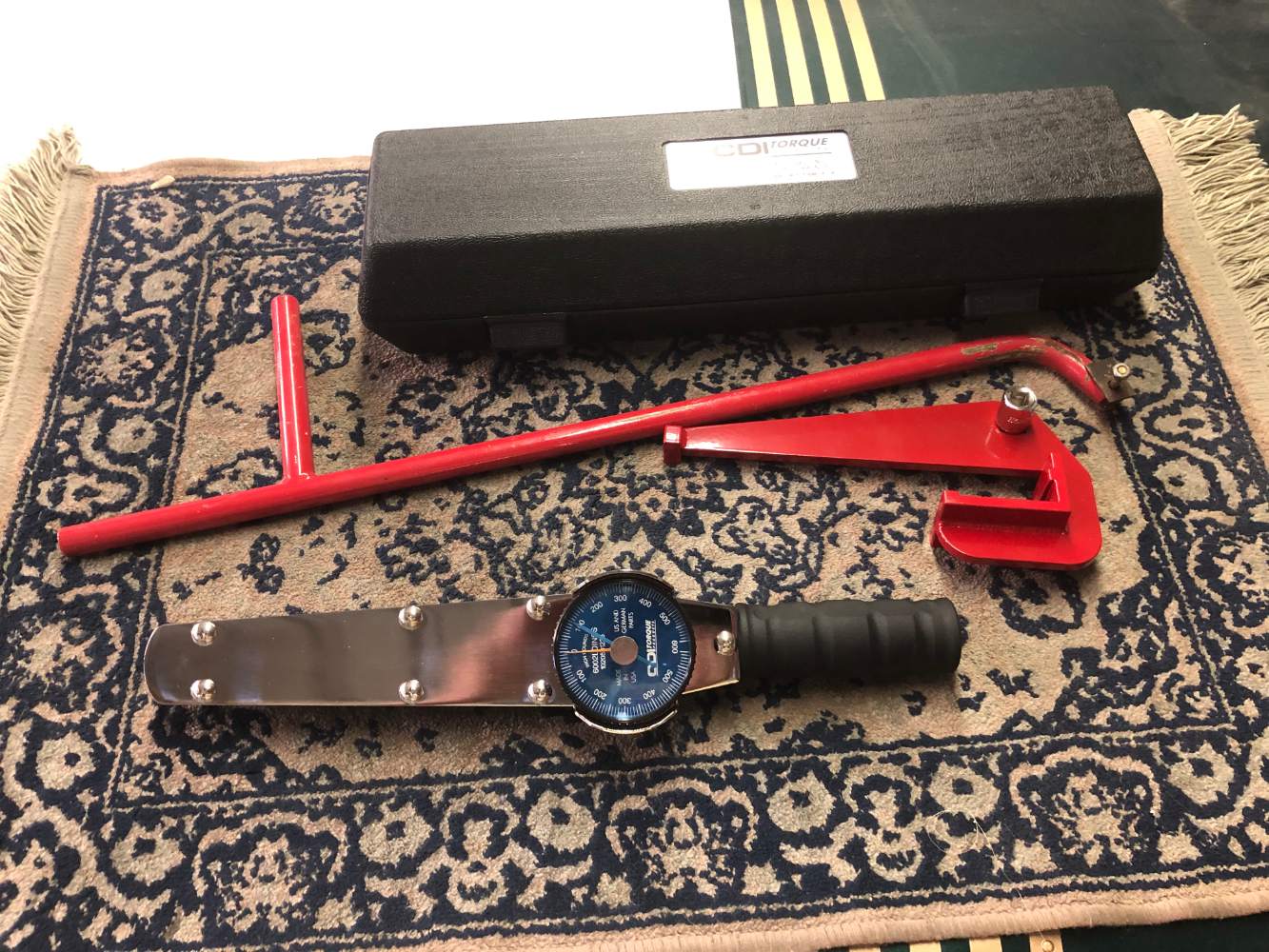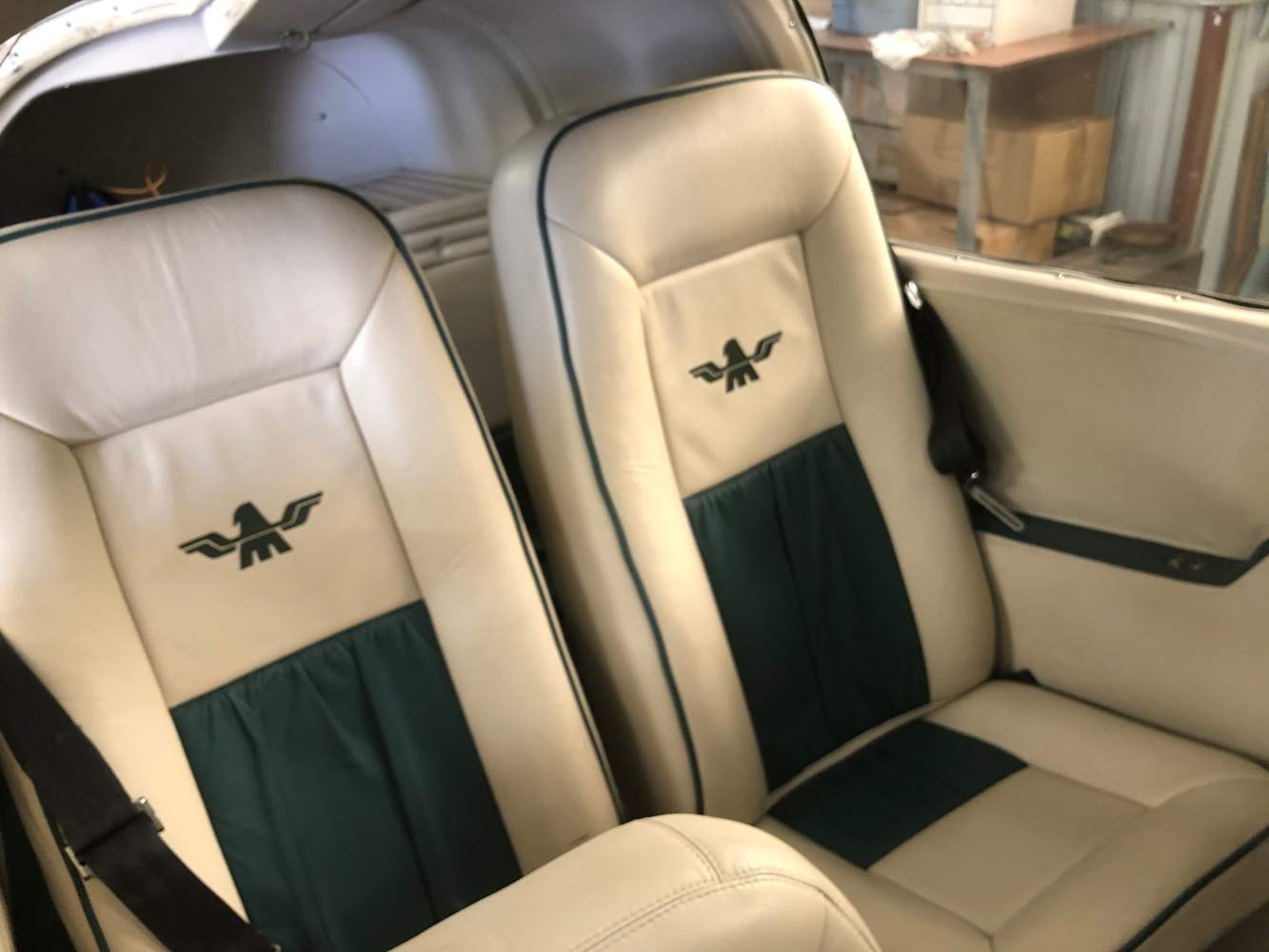-
Posts
184 -
Joined
-
Last visited
Profile Information
-
Gender
Male
-
Location
Las Vegas, Nevada
-
Interests
Flying, photography, shooting, and reading books.
-
Reg #
N56338
-
Model
M20J
Recent Profile Visitors
2,362 profile views
flyer338's Achievements
-
I have decided to retire from flying. I am selling my Mooney. It is currently undergoing an owner assisted annual. I have put the annual on pause. The airplane is opened up and ready for a pre-purchase evaluation. I intended to install a Challenger air filter and LED landing and taxi lights - I already have the parts. The airplane is hangared at North Las Vegas airport (VGT). I will make the hangar available to the buyer at my expense long enough to complete the annual. I am sure the present owner of the hangar would rent it to the buyer long term if the aircraft will continue to be based at VGT. Aircraft N56338 S/N 24-1372 5732 TTAF; 769 TT since factory overhaul ("0" time logbook); 903 lbs useful load IFR current Standard fuel - gauges in each wing Fold-down rear seats No damage history Equipment ("0" time logbook Engine: Lycoming IO360 A3B6 with roller tappets New Slick left mag Right mag has been replaced by an ElectroAir EIS 41000 electronic ignition with spark advance Fuel injection servo overhauled in last 40 hours New spark plug wires Reiff engine heater Oilmatic pre-oiler GAMI injectors Propeller McCauley B2034C214-B 920 hours since overhaul Avionics Aspen EFD1000 E5 – Primary Flight Display Garmin 430 IFR GPS with glideslope King KX-165 with glideslope King KAP 150 autopilot - recently overhauled Garmin 340 audio panel Garmin GTX 327 transponder Garmin GDL82 ADS-B out JPI 700 engine analyzer Shadin fuel flow Dynon D2 backup AI Other Front seats recently recovered in leather Gear tools as pictured Jacks and tailstand Like new cabin cover All manuals and parts books Parts included: Two oil filters Eight spark plugs Sixteen quarts of oil Misc. screws etc. Specifications subject to verification Logs available electronically upon request
-

Fatal crash in California on July 15
flyer338 replied to Eduleo's topic in Mooney Safety & Accident Discussion
I used to fly my C model out of Dinsmore somewhat regularly. The useful load on my J is 904lbs. Figure 20 gallons of fuel remaining when they landed, more than enough to get to Fortuna. That leaves 784 lbs for people and bags. I think that on a hot day I would want to be well under gross weight before taking off. At least until I had experience with this plane on that strip. Dinsmore sets down in the valley near the Van Duzen river. The east end of he runway comes very close to Hwy. 36. Most planes, even at light weights, do not have enough climb performance to climb straight out, in either direction. The wind usually favors a west bound departure. Light airplanes do not always have the performance necessary to take off at gross weight. -
It is annual time, and the brake pads are fine, but the pads are something to have in stock.
-
I am buying consumable items and hardware to have on hand against sudden need. The list includes a set of 66-10500 brake pads. I notice that Rapco pads are just over half the cost of Cleveland pads. Does the cost difference reflect a quality/longevity difference? What says the group?
-

FRONT SEATS, ARTICULATING,
flyer338 replied to Jerry Pressley's topic in Avionics / Parts Classifieds
Are the seats interchangeable between the right and left sides? -
Based on the time it took to R&R the number 3 cylinder on a friends 172 (under appropriate supervision), I would say 4 hours.
-
Third on the J model app.
-
Don, thank you for getting so much Mooney history gathered together in one place. Back in mid-2019 I looked at N43PG and N87PM. Both were at Placerville, CA. They were offered by Skywagons LLC. The pictures of those two Mooneys the article look like they were taken at Placerville. Last August I saw N43PG at the MSC at VGT; the nose gear had broken off and the propeller was bent. http://www.kathrynsreport.com/search?q=N43PG
-
I am doing my annual. I intend to replace the landing and taxi lights with LED bulbs. My 1983 201 has two taxi-lights in the right wing (I do not know how that happened; the Mooney parts manual does not show a wing mounted light for my serial number) and a landing light in the cowl. I would appreciate it if @LANCECASPER would contact me privately to consult. The lights to be replaced are GE Q4509 (x2) and GE4522.
- 44 replies
-
- m20j
- landing light
-
(and 3 more)
Tagged with:
-

M20F cruise performance & service ceiling
flyer338 replied to Chris Briley's topic in Vintage Mooneys (pre-J models)
I have taken a 1965 C Model to more than 17,500 and was able to trueOut at 140 knots TAS on about 6 gallons per hour hour. -

M20C crack found during annual. Worried.
flyer338 replied to MCDsiena's topic in Vintage Mooneys (pre-J models)
Another thought, why wasn’t this discovered and addressed during the pre-buy? -
I made a fuel dipstick for my 1965 C Model with 26 gallons usable per side. I started by running a tank dry. Then I added five gallons and marked my dowel. In order to ensure repeatability of the measurement, I inserted the dowel in the outermost of he three lug positions in the fuel opening. Using a five-gallon interval gave me solid numbers and interpolating between the five-gallon marks turned out to be accurate and consistent. I dealt with the fuel climbing up the stick by only dipping for a second or less, and then ignoring any runners climbing the fuel stick. I used a knife to carve a line in the Lowe’s purchased dowel (I shopped in the PMA TSO department). I made a fuel stick for my recently purchased M20J. I approached this a little differently because I am not (yet) comfortable with running a tank dry with a fuel injected engine. What I did was sort of a reverse extrapolation. I ran a tank close to dry. Then I added fuel until the fuel just registered on my stick. Then I added fuel five gallons at a time and marked my stick until I filled the tank. By subtracting the fuel added from the fuel necessary to fill the tank, I knew how many gallons were in the tank at the first dip. By adding five gallons for each mark, I know the fuel in the tank at the first mark, and it is easy to interpolate between the five gallon marks. I used the fuel cap lug farthest from the fuselage for consistency. I noted that the float gauges on the wing tanks are reasonably accurate. The electric gauges on the panel are not even consistent from left to right. It is the responsibility of every pilot to know how much fuel is on board. Sometimes I want to be light and have only the fuel I need (including a reserve) because I plan to depart from a high density altitude airport (Panguitch, Utah; 6700’ and 87 degrees for a density altitude of about 9500’ ft). I think experience in the plane earned over a long time is critical, and until that experience is validated one should be especially conservative. I do not yet have that experience in my J. I expect that experience will expand or contract my comfort zone and help me to become an old pilot.
-

M20C crack found during annual. Worried.
flyer338 replied to MCDsiena's topic in Vintage Mooneys (pre-J models)
When I bought my 1965 M20C in 1992, the pre-buy revealed vertical cracks where the flap brackets attached to the spar. The cracks has been stop drilled. Over 20 years and 2000 hours, the cracks did not grow. The plane is still flying out of New Jersey. I suspect the repair might have been done before Mooney issued the SB. I was careful to avoid flaps down at speeds in excess of Vfe. I think I only did it once or twice.


















